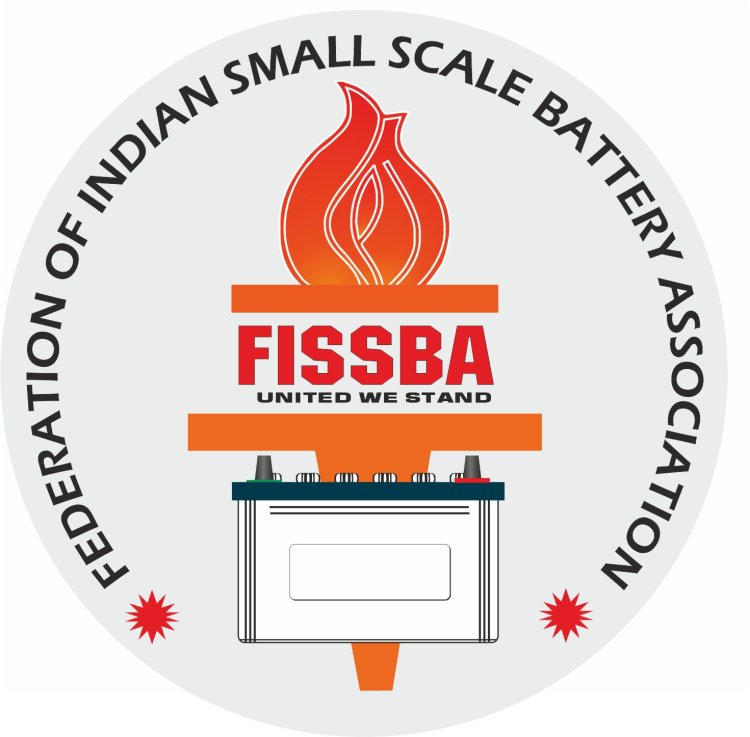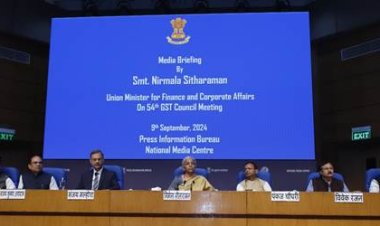Lead Acid Battery Industry - GST 2.0 Financial Impact Analysis
An analysis on the impact of GST 2.0 on Lead Acid battery Industry is prepared after discussion on the all possible questions. This analysis examines the comprehensive financial impact on battery manufacturers, revealing substantial working capital improvements and competitive advantages.

 |
By S. Harashpal Singh Sawhney President, Federation of Indian Small Scale Battery Associations Director, Harsha Industries Corporation, Delhi |
Many questions are floating in the minds of all the battery people such as-
What will be the effect on the sale of local batteries if GST is 18%,
How much money will be saved from getting stuck in the GST department,
How much more money will be available for the production input…and So on
However, some of the effects have direct impact such as reduction in the sale price of batteries by 10%, equal GST on lithium batteries, providing an equal sales platform to compete with and some effects have indirect such as reduction in price of scooters, motorcycles and small cars will increase the battery sales.
This impact analysis assessment of GST 2.0 is prepared after discussion on the all possible questions. This analysis examines the comprehensive financial impact on battery manufacturers, revealing substantial working capital improvements and competitive advantages.
GST Rate Changes Confirmed
Battery Products (HSN 8507):
- Lead acid batteries: 28% reduced to 18%
- All battery categories are now unified at 18% GST rate
Raw Materials (No Change):
- Lead metal/unwrought lead (HSN 7801): Remains at 18%
- Lead plates and sheets (HSN 7804): Remains at 18%
- Other inputs (plastics, chemicals, services): Remain at 18%
Immediate Financial Impact
Working Capital Enhancement
Per ₹10 crore monthly turnover:
Output GST Reduction:
- Previous regime: ₹2.80 crore (28%)
- New regime: ₹1.80 crore (18%)
- Monthly reduction: ₹1.00 crore
Input Tax Credit (Unchanged):
- Lead metal ITC (60% of sales): ₹1.08 crore at 18%
- Other inputs ITC (10% of sales): ₹0.18 crore at 18%
- Total ITC: ₹1.26 crore
Net Cash GST Position:
- Previous net payable: ₹1.54 crore
- New net payable: ₹0.54 crore
- Monthly cash released: ₹1.00 crore
Finance Cost Relief
Interest savings on improved cash flow (12% borrowing rate):
- Monthly finance cost relief: ₹1.00 lakh
- Annual finance cost savings: ₹12.00 lakh per ₹10 crore monthly run-rate
Customer Price Impact
Invoice Price Reduction
Tax burden reduction: 10 percentage points (28% to 18%)
Customer invoice impact:
- Previous invoice (₹10,000 base): ₹12,800
- New invoice (₹10,000 base): ₹11,800
- Absolute reduction: ₹1,000 (7.81%)
Product-Specific Tax Savings
| Battery Type | Base Price | Tax Savings | Per-Ah Savings |
| 12V 150Ah UPS/Inverter | ₹10,000 | ₹1,000 | ₹1.11 |
| 12V 200Ah Flooded Solar | ₹13,500 | ₹1,350 | ₹1.125 |
| E-rickshaw 48V-100Ah Pack | ₹26,000 | ₹2,600 | ₹1.08 |
| Automotive 12V-80Ah SLI | ₹6,000 | ₹600 | ₹1.25 |
Segment-Wise Market Impact
UPS/Inverter Segment (Home/SME)
Market dynamics:
- Price elasticity enables 8-12% volume growth potential
- Passing 50-70% of tax savings maintains margin enhancement
- Improved dealer rotation with lower working capital requirements
- DSO compression potential of 3-5 days in active markets
Solar Battery Segment (Off-grid & Hybrid)
Competitive positioning:
- Enhanced competitiveness against lithium-ion in 1-10 kWh applications
- Tender bid advantages with 4-6% price reduction capability
- Per-kWh CAPEX improvement of ₹560/kWh for 12V-200Ah systems
- Stronger positioning in state/CSR/DFI-funded programs
E-rickshaw Segment (L3 Commercial)
Total cost of ownership impact:
- ₹2,600 upfront savings per 48V-100Ah pack
- Daily amortized cost reduction of ₹2-3 over 36-month lifecycle
- Volume uplift potential of 6-10% in price-sensitive markets
- Enhanced competitiveness against imported alternatives
Automotive SLI Segment
Market dynamics:
- Retail price psychology benefits with ₹400-700 lower invoices
- Market share gains from unorganized sector players
- Expected 2-4% incremental volume growth
Strategic Benefits for Manufacturers
Enhanced Liquidity Management
- Monthly working capital release of ₹100 lakh per ₹10 crore turnover
- Improved cash conversion cycles
- Reduced dependency on overdraft facilities
- Enhanced capacity for growth investments
Operational Advantages
- Elimination of GST rate inversions (output and input both at 18%)
- Simplified ITC management and reduced refund cycles
- Legal framework for MRP adjustments on existing inventory
- Reduced compliance burden with unified rate structure
Competitive Positioning
- Export competitiveness improvement of 1-2% on FOB pricing
- Enhanced dealer financing capabilities
- Improved bid positioning for institutional sales
- Stronger defense against import competition
Risk Factors and Mitigation
Compliance Considerations
- Enhanced scrutiny anticipated with revenue impact visibility
- ERP system updates required for new rate structure
- Vendor compliance verification critical for ITC optimization
- Transition period complexity management during September-October 2025
Market Dynamics
- Potential policy changes affecting alternative battery technologies
- Rate differential management with service-heavy product variants
- Inventory transition challenges with dual-rate periods
Price Strategy Framework
Pass-through Recommendations by Segment
| Segment | Optimal Pass-through | Volume Response | Strategic Rationale |
| UPS/Inverter 12V-150Ah | 50-70% | 8-12% growth | Balance volume and margin |
| Solar 12V-200/220Ah | 60-80% | 10-15% growth | Competitive positioning |
| E-rickshaw 48V-100/120Ah | 40-60% | 6-10% growth | Price sensitivity focus |
| Automotive SLI | 50-70% | 2-4% growth | Market share defense |
Implementation Roadmap
Immediate Actions (September 2025)
- Financial system updates: Configure ERP systems for new GST rates
- Pricing strategy deployment: Issue revised price lists with effective dates
- Inventory management: Implement MRP re-stickering protocols
- Dealer communication: Train channel partners on new pricing structure
Medium-term Strategy (Q4 2025 - Q1 2026)
- Market positioning: Launch promotional campaigns highlighting price advantages
- Capacity planning: Leverage improved cash flows for expansion projects
- Competitive response: Monitor market reactions and adjust strategies
- Export optimization: Revise international pricing with cost advantages
Long-term Outlook (2026-2030)
- Industry CAGR enhancement from 8-9% to 12-14%
- Organized market share expansion from 35% to 45%
- Enhanced employment generation in manufacturing and distribution
- Stronger export competitiveness in African and Southeast Asian markets
Financial Projections Summary
Key metrics per ₹10 crore monthly turnover:
- Working capital release: ₹100 lakh monthly
- Annual finance cost savings: ₹12 lakh
- Customer price reduction capability: 7.81%
- Volume growth potential: 6-15% across segments
- Market share expansion opportunity: 2-5 percentage points
The GST 2.0 reforms provide lead acid battery manufacturers with substantial financial advantages through enhanced working capital management, competitive pricing flexibility, and simplified compliance structures, positioning the industry for accelerated growth and market expansion.
Your reaction and Views are Welcome






























